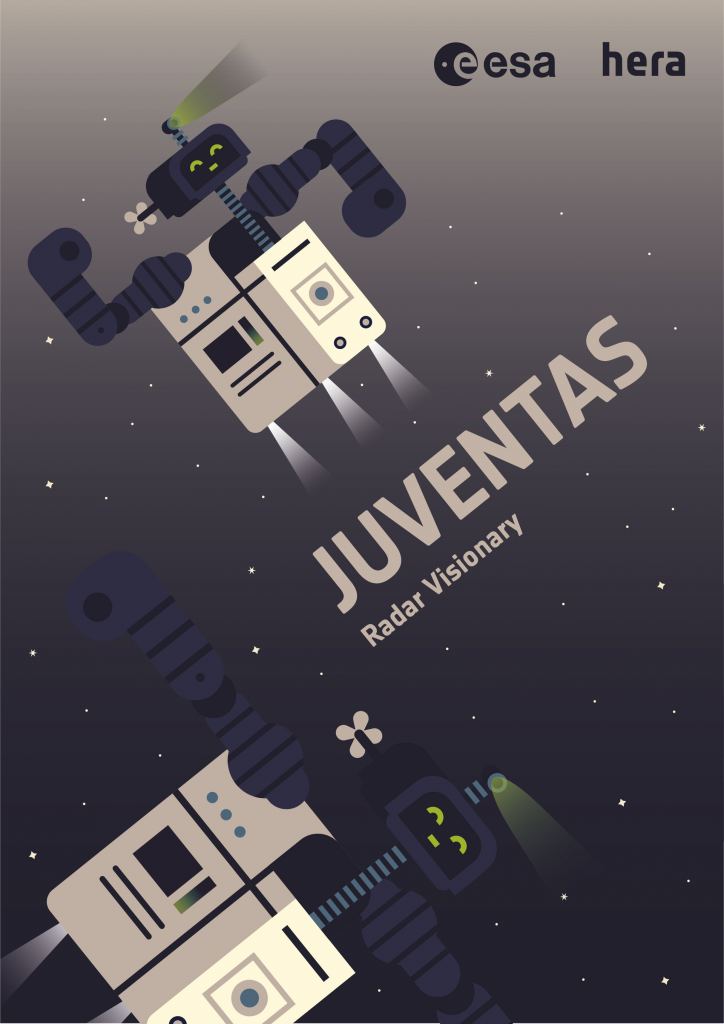Engineers only get one shot at making a spacecraft work as intended. Or at least they only get one shot in space. In the preparation leading up to that final, climactic moment, there are typically thousands of hours of tests run on numerous systems and subsystems. If all goes well, it bodes well for the mission’s overall success, but if problems arise, it’s much easier to address them on the ground than while a spacecraft is already orbiting. A model of a new spacecraft known as Juventas just completed a significant testing milestone – passing testing in a room known as an anechoic chamber.
That milestone is essential for Juventas as its primary mission focuses on a low-frequency radar the craft will use to peer 100 m beneath the surface of Dimorphos, the smaller partner in the Didymos binary asteroid system. Planned for launch with ESA’s Hera satellite in 2024, it will arrive at the Didymos system in 2027, about five years after NASA’s recently launched DART mission will purposefully collide with Dimophos in an attempt to change its orbit.
 Juventas’ demo body being lifted by a drone.
Juventas’ demo body being lifted by a drone.Credit – ESA / TU Dresden
Just watching the fallout from that spectacular collision is only part of the mission, though. Pointing a ground-penetrating radar at Dimorphos will help scientists understand the effects of the impact on the asteroid’s internal structure, which is only 160 km in diameter. But it will also help flesh out what the asteroid’s interior is made of in the first place.
The low-frequency radar has to work well to accomplish that mission, and it hasn’t proved easy to test. Operating at 60 MHz, it would need to be tested at a range far below the standard operating frequency of the Hybrid European Radio Frequency and Antenna Test Zone, or “Hertz” chamber. The Hertz chamber, coated with the usual assortment of foam spikes, could test the power output and interference from devices operating at the 400 MHz range.
ESA video describing the Hera mission, which Juventas will accompany, in detail.Credit – ESA YouTube Channel
Such a high-frequency cut-off didn’t work for the Juventas team. To get the data they needed, they needed to change the capabilities of the Hertz chamber itself – and luckily, they came across an opportunity to do so. ESA provided some funding for a general upgrade to the Hertz chamber for general testing purposes but then tailored some aspects specific to the testing environment needed by Juventas.
Buying better foam panels wasn’t the only upgrade to the chamber. The upgrade installed a combination of hardware (fiberglass towers) and software (noise cancellation) improvements that engineers hope will help deal with some of the signal reflection and echoing that plagued low-frequency testing in the chamber in the past.
 ESA’s minimalist graphic of the Juventas probe.
ESA’s minimalist graphic of the Juventas probe.
Credit – ESA
When all the upgrades were done, researchers put an actual model of the Juventas probe body into the refurbished chamber. They attached its solar panels and antennas in a specific attempt to understand how all the different wireless power, sensing, and communication systems would interact with one another. The mockup still passed with flying colors, right before a critical design review for the project next month.
The mission looks set to pass that design review and keep moving forward to development. The actual Juventas spacecraft body will return to the Hertz chamber in 2023 for final electromagnetic testing. If all goes well, the 6U sized CubeSat will hitch a ride with Hera and prove that all the testing that went into its design was worthwhile when it gives us our first up-close images of the interior of an asteroid.
Learn More:
ESA – Testing mini-radar to peer inside asteroid
The Jerusalem Post – Asteroid’s insides to be examined by ESA radar satellite probe
ABP – European Space Agency Is Testing JuRa, A Mini Radar To Peer Into An Asteroid
Parabolic Arc – Planetary Defenders: After NASA’s DART Comes ESA’s Hera Mission
Lead Image:
Juventas body with antennas set up for testing in the Hertz anechoic chamber.
Credit – ESA / P. de Maagt

